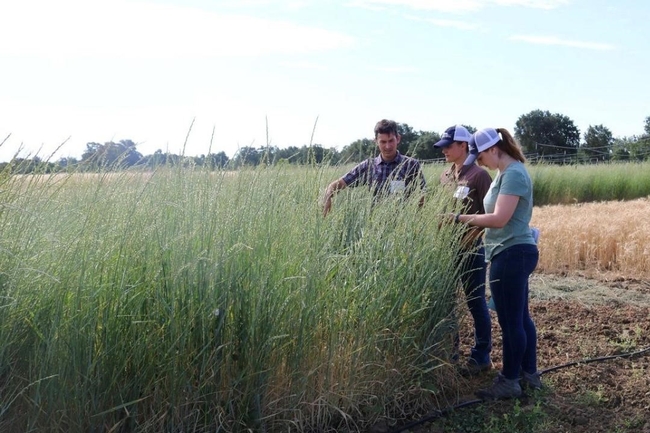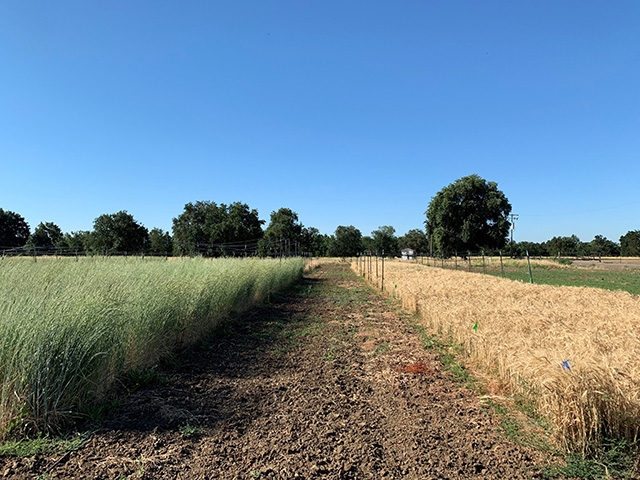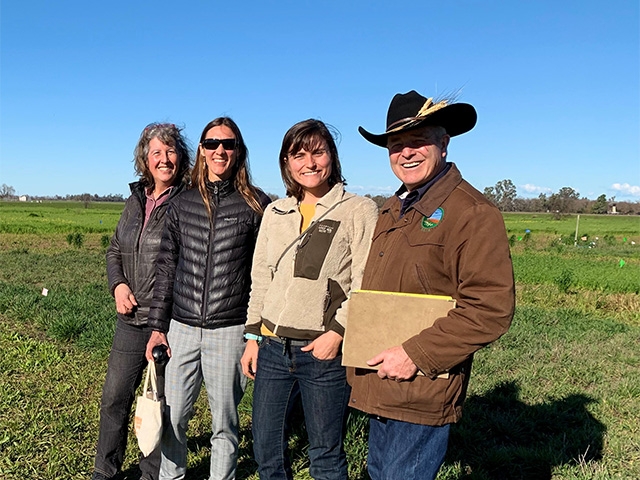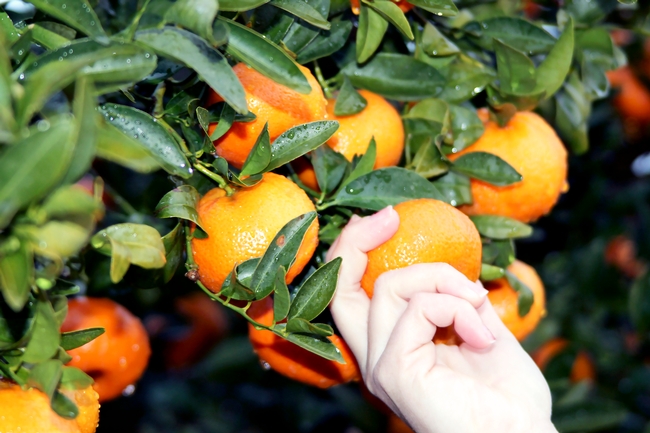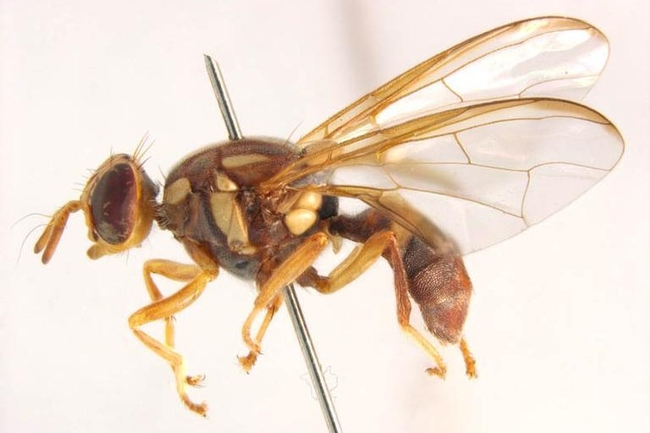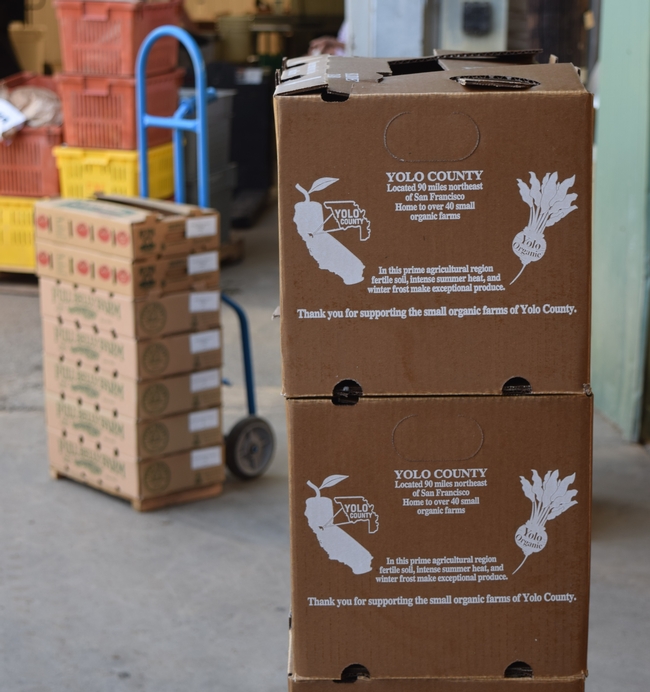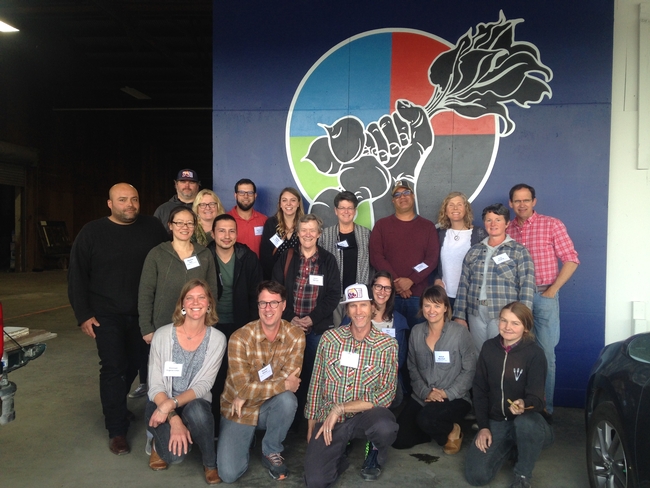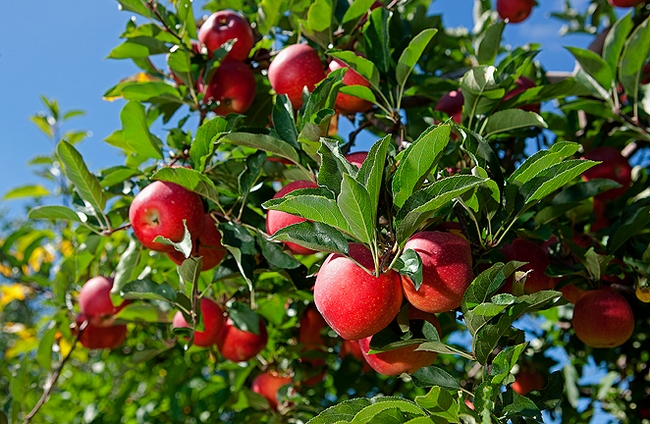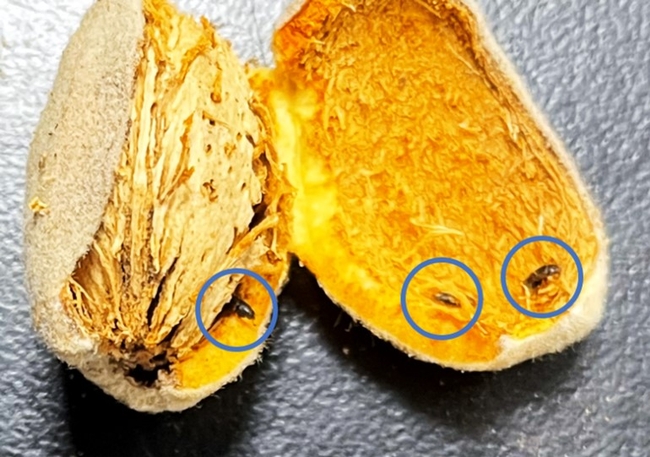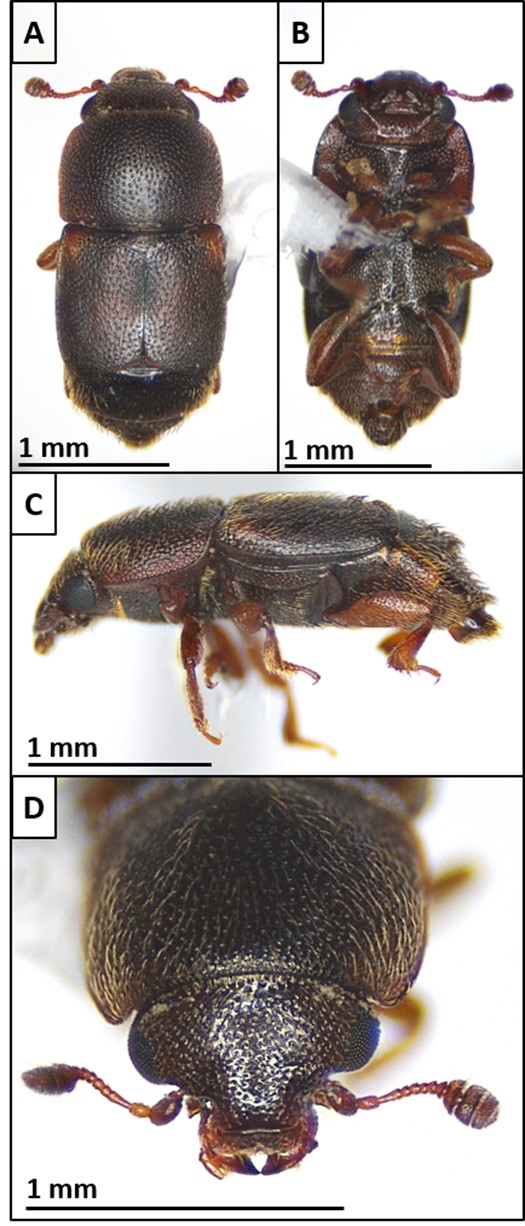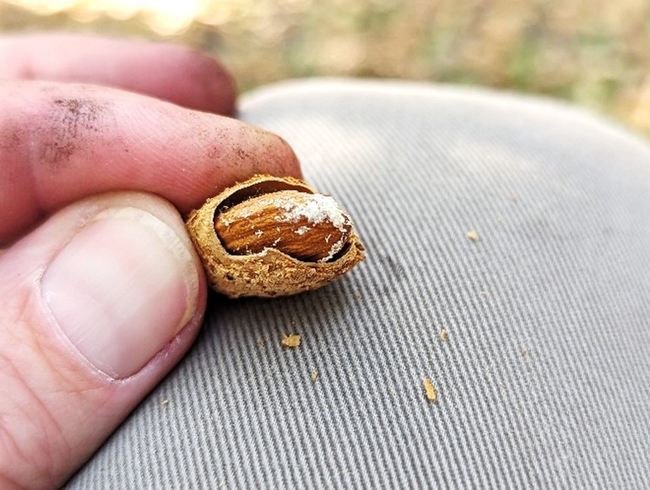Posts Tagged: agriculture
No-till annual wheat better for soil health in California’s climate
One more reason to adopt sustainable cultivation
California wheat farmers could both maintain their yields and improve soil health by growing annual wheat without tilling the soil year after year.
This could be one more encouragement to farmers to adopt a sustainable practice commonly called conservation tillage, no-till or minimum-till cultivation, impacting how we grow a grain that supplies about 20 percent of the calories and protein for people around the world.
A new study, by a team led by Mark Lundy, University of California Cooperative Extension specialist in UC Davis' Department of Plant Sciences, offers new insight for decades-long discussions around soil conservation, sustainable agriculture and climate-warming emissions related to growing our food. The study has been published in the journal Soil and Tillage Research. For the first time, researchers have shown that annual wheat that is not tilled each year is better for stashing carbon in the soil than perennial wheatgrass, while still yielding more crop in Central California.
Previous studies have looked at annual wheat that is tilled each year, annual wheat that is not tilled, and a cousin species, perennial intermediate wheatgrass (trademarked Kernza), which also is not tilled. But until now, no one has looked at all of the benefits and trade-offs together. Most importantly, “no one has ever controlled for tillage,” Lundy said. “And, no one has compared annual wheat to perennial intermediate wheatgrass over multiple years in a Mediterranean climate, which is what we have in California.”
This study also is unique because it delves into the deeper question of what is going on in the soil that drives the different results for carbon there. Soil carbon reflects various processes linked to plant activity and soil health. Measuring the different forms of soil carbon may also signal whether a farming system is accumulating carbon in the soil over time – a plus for reducing climate-warming gases in the atmosphere.
“Measuring soil carbon is complex and nuanced,” said Kalyn Taylor, the lead author on the paper. “We started this experiment because we wanted to know whether and how plant activity and tilling or not tilling would affect the carbon story belowground in California's climate.”
“When we started this study, we thought the crop being perennial or annual would drive the differences in carbon storage in the soil,” Lundy added. Specifically, they had expected perennial wheatgrass would lead to more carbon in the soil because of its deeper, better-established root system. “But that's not what we found,” he went on. “What we found was, it was the lack of tillage, plus the level of productivity of common annual wheat, that made the difference in soil carbon here in California.”
Soil carbon in annual vs. perennial grain
In 2017, Lundy, then-graduate-student Taylor, UC Davis Professor Emeritus Kate Scow and others on the team started measuring different forms of soil carbon in test plots at Russell Ranch, west of campus. Plots were planted with annual wheat that was tilled each spring, annual wheat that was not tilled and perennial intermediate wheatgrass (Kernza) that also was not tilled.
Each year, the researchers measured the carbon present in the soil, the amount of soil organisms (which have carbon in their bodies) and the amount of material the plants created.
At the end of three growing seasons, they found that land planted with no-till, common, annual wheat had the highest amount of soil organisms, measured as biomass, of the three treatments.
The researchers also found soil carbon is more likely to remain stable in the no-till, annual plots, compared to both tilled wheat and wheatgrass.
In addition, the no-till, annual wheat produced plant material more consistently than the perennial wheatgrass across the three years, which saw variation in rainfall.
“Overall, annual wheat grown without soil disturbance or tillage had both higher productivity and higher potential for storing carbon in the topsoil than perennial wheatgrass in our Mediterranean climate,” Lundy said.
Related research
“No-till annual wheat increases plant productivity, soil microbial biomass, and soil carbon stabilization relative to intermediate wheatgrass in a Mediterranean climate,” is online now and will be published in the January 2024 edition of Soil and Tillage Research.
The team also found that tilled annual wheat vs. Kernza stores total carbon at different depths in the soil profile and hosts distinct soil fungal communities, primarily in the root zone and topsoil: Taylor, K., Samaddar, S., Schmidt, R., Lundy, M. and Scow, K., 2023. Soil carbon storage and compositional responses of soil microbial communities under perennial grain IWG vs. annual wheat. Soil Biology and Biochemistry, p.109111.
Previous work comparing the perennial grain known as intermediate wheatgrass (trademarked Kernza) to annual wheat had not distinguished the extent to which soil health benefits are a function of the perennial nature of the crop. Read the story here.
This story was originally published on the UC Davis News site.
First-ever Queensland fruit fly quarantine restricts moving homegrown produce
QFF quarantine in LA, Ventura counties among seven fruit fly quarantines statewide
Residents in multiple Southern California and Northern California counties should not move homegrown fruits and vegetables from their properties to help contain several species of fruit fly that can destroy crops and impact the livelihoods of local farmers.
With sharing and gifting of food integral to the holiday season, the California Department of Food and Agriculture is reminding people to heed the seven active fruit fly quarantines aimed at controlling the Mediterranean fruit fly, Oriental fruit fly, Tau fly and Queensland fruit fly. The links below describe quarantine zone boundaries:
- Mediterranean fruit fly: Los Angeles County, Leimert Park Area
- Oriental fruit fly: San Bernardino and Riverside Counties, Redlands and Yucaipa Areas
- Oriental fruit fly: Sacramento County, Rancho Cordova Area
- Oriental fruit fly: Contra Costa County, Brentwood Area
- Oriental fruit fly: Santa Clara County, Santa Clara Area
- Tau fly: Los Angeles County – Stevenson Ranch, Valencia, Santa Clarita Areas
- Queensland fruit fly: Ventura and Los Angeles Counties, Thousand Oaks Area
People within these zones should consume or process (i.e., juice, freeze or cook) their homegrown fruits and vegetables at the place of origin and not move them off their property. Uneaten produce should be double-bagged in plastic bags and disposed of in the landfill bin – not compost or green waste.
Queensland fruit fly threatens California citrus, other crops
The Queensland fruit fly (Bactrocera tryoni) quarantine is the first of its kind in the U.S. Although QFF was first seen in California in 1985, the recent detection of two adult males triggered the unprecedented quarantine action by USDA's Animal and Plant Health Inspection Service and CDFA.
“This pest has earned a bad reputation for wreaking havoc on fruit production in Australia, where it is native,” said Hamutahl Cohen, University of California Cooperative Extension entomology advisor for Ventura County. “Adult flies lay their eggs in fruit, and the eggs hatch into larvae that then feed on the fruit, causing damage.”
And while females of other fruit fly species live for only two or three months, QFF females are unique in that they can live up to a year, according to Cohen.
“Once QFF populations take root, they're challenging to manage because females can each lay up to 100 eggs per day,” Cohen said.
In addition to being highly adaptable to a variety of environmental conditions, QFF has more than 170 host plants – including a wide range of California commodities such as citrus, grape, strawberry, fig, avocado, apricot, peach, cherry, nectarine, plum, pear, apple, tomato and sweet pepper.
The threat to citrus is especially concerning, as Southern California growers continue to grapple with the specter of spreading huanglongbing (HLB) disease, which kills citrus trees. Cohen said residents of citrus-growing regions can do their part to help their neighbors and local economy by respecting quarantine restrictions.
“Growers are already dealing with other invasive species like Asian citrus psyllid [vector of HLB pathogen], so we as homeowners need to prevent the spread of fruit flies to reduce the burden on them,” she explained.
While a spike this year in the detections of multiple fruit fly species was likely caused by a host of factors, Cohen speculates that increased post-pandemic travel is helping to move the flies. And with holiday travel in full swing, she said it's important to practice “Don't Pack a Pest” principles.
“Invasive species often hitchhike on fruits and vegetables brought into California by travelers – that's why we often first find invasive species in urban and suburban backyards, and not on farms,” Cohen said. “Travelers entering the U.S. can visit dontpackapest.com to learn about which products they can and cannot bring back with them.”
To report a suspected infestation of fruit fly larvae in homegrown produce, call the CDFA pest hotline at 1-800-491-1899. Growers with questions and concerns are urged to contact their local agricultural commissioner's office.
Winter season: A time for food safety systems re-evaluation and education for food hubs
The holiday meal season is often a busy time for food hubs – entities that handle the aggregation, distribution and/or marketing of source-identified regional food – as restaurants, retailers and consumers fill their tables and shelves with an abundance of fresh, local products. However, the subsequent winter months can provide a valuable time for reflection and re-evaluation of a food hub's systems and processes. In this spirit, it may be helpful to remind people working at food hubs that University of California Sustainable Agriculture Research and Education Program (UC SAREP) offers a suite of food-safety resources – in English and in Spanish – on its website.
- A step-by-step guide for food hubs on how to pursue a third-party food safety audit with guidance on how to navigate buyers' questions.
- Two sample food-safety plans intended as a starting point to be adapted to a food hub's specific operations and practices.
- Example standard operating procedure, or SOP, documents related to 11 common tasks carried out by food hubs.
“We hope these resources can play a role in helping food hubs to adopt best practices and control risks related to food safety,” says Gwenael Engelskirchen, sustainable food and farming coordinator with UC SAREP, who led the development of these educational tools.
According to the Centers for Disease Control and Prevention, approximately, 1 in 6 Americans (or 48 million people) gets sick and 3,000 die of foodborne diseases annually. In 2011, to help prevent the occurrence of foodborne illness, the federal government enacted the Food Safety Modernization Act (FSMA), designed to outline actions to be taken at various points along the supply chain for both human and animal food.
UC SAREP's Food Safety Resources for Food Hubs are intended to help food hubs navigate these food-safety regulations and accompanying best practices. Resources are also available in Spanish at Recursos de seguridad alimentaria para los centros de distribución de alimentos.
Food safety certification guide
Some buyers verify a supplier's food safety program by requiring an audit performed by a third-party certification body or auditing company. This Guide to Food Safety Certification offers key considerations before deciding to pursue a food safety audit and helps users navigate the food safety certification process.
Food safety plan
Food hubs that meet the criteria for full compliance with FSMA's Preventive Controls for Human Food Rule are required to have a food-safety plan in place. And for all food hubs, having a shared document describing the facility's operations and how potential risks of food contamination are managed is a good idea. Two sample food safety plans, inspired by the operations of food hubs in California, provide a starting point and can be adapted to a hub's own operations.
Standard operating procedures
Standard operating procedures provide detailed step-by-step instructions for how to carry out operational tasks within a food facility. The standard operating procedure samples cover common topics such as handwashing, facility cleaning and more, and are intended to be adapted to a food hub's specific operations and practices.
Jacob Weiss from Spork Food Hub in Davis said, “the templates were a great starting place for us to build the framework of our food safety plan. It helped us figure out what we needed to (and didn't) need to include. I think the SOPs are also really useful because they are broad enough to get you started but flexible enough to add the specific practices of your business or hub.”
For additional information, visit UC SAREP's webpages on Food Safety Resources for Food Hubs or Recursos de seguridad alimentaria para los centros de distribución de alimentos.
These resources and tools were developed in collaboration with various project partners, including Department of Food Science and Technology at UC Davis, Department of Population Health and Reproduction at UC Davis School of Veterinary Medicine, Center for Precision Medicine and Data Science at UC Davis Health, and Community Alliance with Family Farmers.
New UC studies estimate production and harvest costs for coastal apples
Two new studies that can help Central Coast growers and other readers estimate costs and potential returns for both organically and conventionally produced apples for processing were recently released by University of California Agriculture and Natural Resources, UC Cooperative Extension and the UC Davis Department of Agricultural and Resource Economics.
“These studies provide growers with a baseline to estimate their own costs, which can help when applying for production loans, projecting labor costs, securing market arrangements, or understanding costs associated with water and nutrient management and regulatory programs,” said Brittney Goodrich, UC Cooperative Extension specialist and co-author of the studies.
The new studies, “2023 Sample Costs to Produce and Harvest Organic Apples for Processing” and “2023 Sample Costs to Produce and Harvest Apples for Processing,” can be downloaded for free from the UC Davis Department of Agricultural and Resource Economics website at https://coststudies.ucdavis.edu.
The studies focus on processing apples, not fresh market apples, which makes a difference in farming practices. Apples grown for processing on the Central Coast are mostly pressed for juice and sparkling cider.
“Ready-to-eat means that looks matter – blemishes and so forth are a big deal. Juice not so much, it all gets smushed in the end,” said co-author Mark Bolda, UC Cooperative Extension farm advisor for Santa Cruz, Monterey and San Benito counties. “Varieties grown here are Gala, Newtown Pippins, Mitsui and some Granny Smith.”
The cost studies model a management scenario for a 100-acre farm, 20 acres of which are planted to a mature orchard that produces apples for processing. The remaining acres are planted to apples not yet in production, caneberries, strawberries and vegetables. In each study, the authors describe the cultural practices used for organically or conventionally produced apples, including land preparation, soil fertility and pest management, irrigation and labor needs. Harvest costs are also shown.
In six tables, they show the individual costs of each operation for apples, material input costs, and cash and non-cash overhead costs in a variety of formats. A ranging analysis shows potential profits over a range of prices and yields.
For a detailed explanation of the assumptions and calculations used to estimate the costs and potential returns for each crop, readers can refer to the narrative portion of each study.
For more information, contact Mark Bolda at mpbolda@ucanr.edu; Laura Tourte, emeritus UCCE advisor, at ljtourte@ucanr.edu; or Jeremy Murdock of UC Davis Department of Agricultural and Resource Economics at jmmurdock@ucdavis.edu.
Sample cost of production studies for many other commodities grown in California are also available for free at https://coststudies.ucdavis.edu
New pest infesting almonds and pistachios in the San Joaquin Valley
Crop sanitation will be key to controlling the invasive carpophilus beetle
Growers and pest control advisers (PCAs) should be on the lookout for a new pest called carpophilus beetle (Carpophilus truncatus). This pest was recently found infesting almonds and pistachios in the San Joaquin Valley, and is recognized as one of the top two pests of almond production in Australia. Damage occurs when adults and larvae feed directly on the kernel, causing reductions in both yield and quality.
Populations of carpophilus beetle were first detected in September in almond and pistachio orchards by University of California Cooperative Extension Specialist Houston Wilson of UC Riverside's Department of Entomology. Pest identification was subsequently confirmed by the California Department of Food and Agriculture.
Wilson is now working with Jhalendra Rijal, UC integrated pest management advisor, North San Joaquin Valley; David Haviland, UCCE farm advisor, Kern County; and other UCCE farm advisors to conduct a broader survey of orchards throughout the San Joaquin Valley to determine the extent of the outbreak.
To date, almond or pistachio orchards infested by carpophilus beetle have been confirmed in Stanislaus, Merced, Madera and Kings counties, suggesting that the establishment of this new pest is already widespread. In fact, some specimens from Merced County were from collections that were made in 2022, suggesting that the pest has been present in the San Joaquin Valley for at least a year already.
“It has likely been here for a few years based on the damage we've seen," Rijal said.
This invasive beetle overwinters in remnant nuts (i.e. mummy nuts) that are left in the tree or on the ground following the previous year's harvest. Adults move onto new crop nuts around hull-split, where they deposit their eggs directly onto the nut. The larvae that emerge feed on the developing kernels, leaving the almond kernel packed with a fine powdery mix of nutmeat and frass that is sometimes accompanied by an oval-shaped tunnel.
Carpophilus beetle has been well-established in Australia for over 10 years, where it is considered a key pest of almonds. More recently, the beetle was reported from walnuts in Argentina and Italy as well. Carpophilus truncatus is a close relative to other beetles in the genus Carpophilus, such as the driedfruit beetle (C. hemipterus) that is known primarily as a postharvest pest of figs and raisins in California.
Monitoring for carpophilus beetle is currently limited to direct inspection of hull split nuts for the presence of feeding holes and/or larvae or adult beetles. A new pheromone lure that is being developed in Australia may soon provide a better monitoring tool for growers, PCAs and researchers.
“We're lucky to have colleagues abroad that have already been hammering away at this pest for almost a decade,” said Haviland. “Hopefully we can learn from their experiences and quickly get this new beetle under control.”
The ability to use insecticides to control carpophilus beetle remains unclear. The majority of the beetle's life cycle is spent protected inside the nut, with relatively short windows of opportunity available to attack the adults while they are exposed. The location of the beetles within the nut throughout most of their life cycle also allows them to avoid meaningful levels of biological control.
In the absence of clear chemical or biological control strategies, the most important tool for managing this beetle is crop sanitation.
“Given that this pest overwinters on remnant nuts, similar to navel orangeworm, crop sanitation will be fundamental to controlling it,” Wilson said. “If you needed another reason to clean up and destroy mummy nuts – this is it.”
In Australia, sanitation is currently the primary method for managing this pest. And here in California, new research and extension activities focused on carpophilus beetle are currently in the works.
“It's important that we get on top of this immediately,” said Wilson. “We're already starting to put together a game plan for research and extension in 2024 and beyond.”
If you suspect that you have this beetle in your orchard, please contact your local UC Cooperative Extension farm advisor (https://ucanr.edu/About/Locations/), County Agricultural Commissioner (https://cacasa.org/county/) and/or the CDFA Pest Hotline (https://www.cdfa.ca.gov/plant/reportapest/) at 1-800-491-1899.


